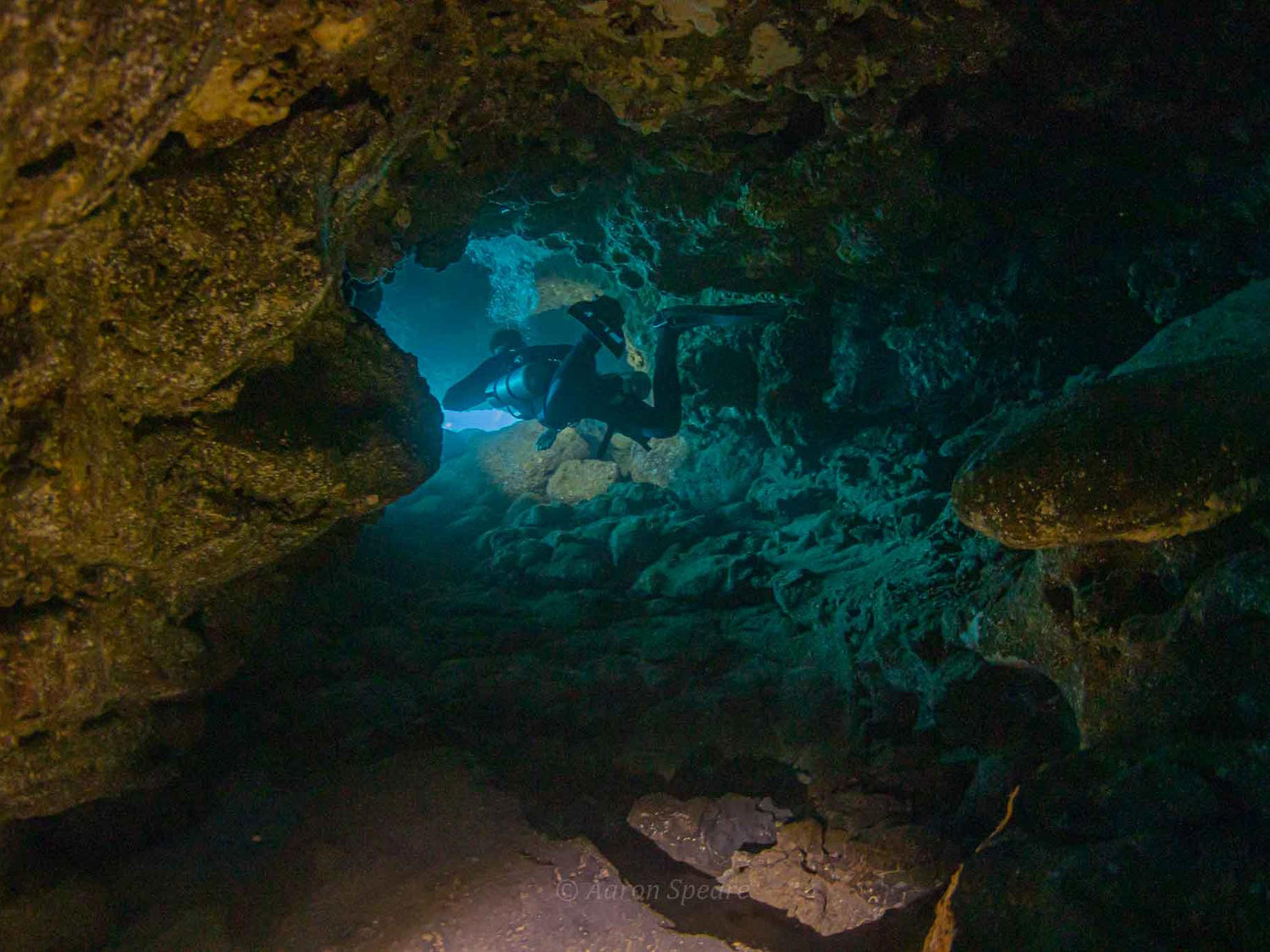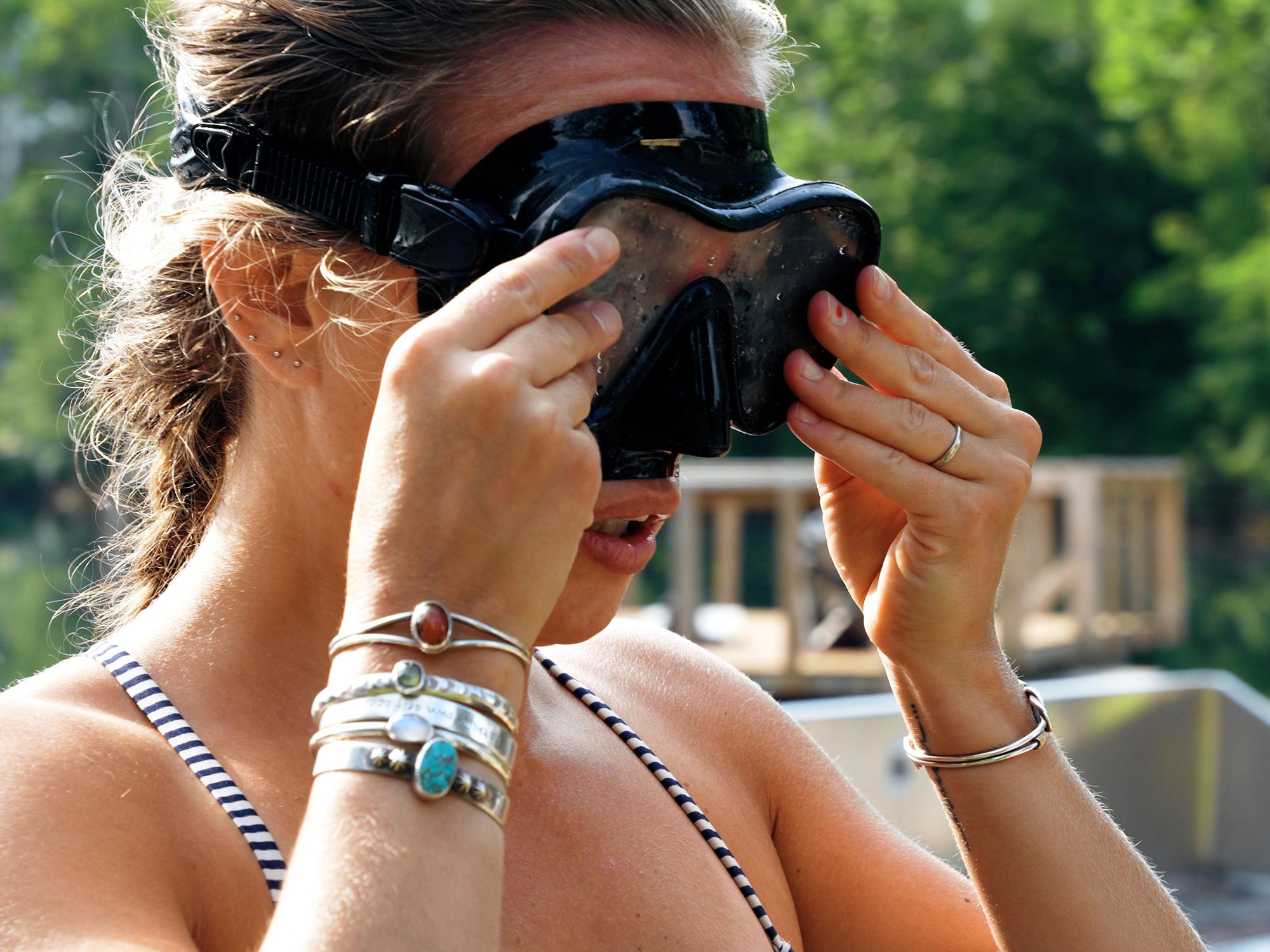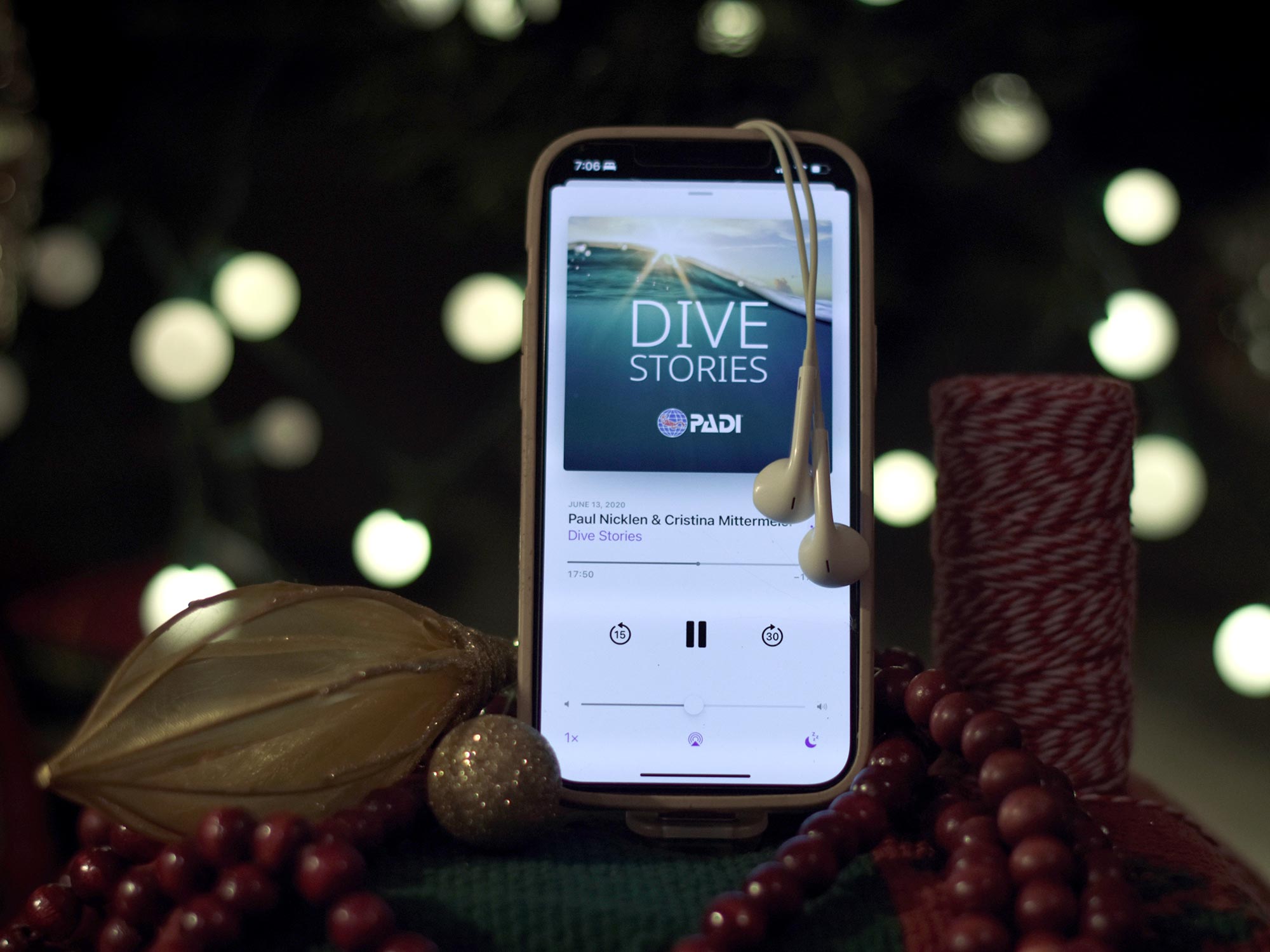Story and Photos by Aaron Speare
When most think of a dive trip to Hawaii the idea of crystal blue water, sharks, and sea turtles, come to mind. However the excitement of travelling to a blue paradise formed by lava really starts to stir the imagination of the cave diver inside of me. I quickly became submerged in my computer discovering Hawaii has it’s own speleological society, this was great news!
It didn’t take long after that to find out that the Island of Oahu has a prevalent amount of Karst (which happens to be Neptune’s favourite ingredient in designing caves). The final cherry on top was learning that previous cave divers mapped many of the small systems the Island of Oahu has. As days drew closer to departure my dive buddies and I, armed with cave maps and boarding passes, were ready to begin our search.

© Aaron Speare
The trials and tribulations of traveling
Travelling as a technical diver is always a delicate dance. Balancing weight allowances, and arranging tank requirements at the destination, not forgetting to mention the suspicious looking X-ray image of a canister light through a carry-on bag, the worries of getting all your belongings in one piece is always top of mind. Much to my relief the gear had arrived safely at it’s destination.
The majority of our diving took place at very popular recreational site called Shark’s Cove. As we geared up for the first time, we couldn’t help but feel a bit silly donning a 3mm wet suit and large doubles we had shipped, while the divers around us were in shorts and aluminum 80s. Regardless of how we looked with our reels clipped off and wet notes ready, we descended down the hill to the picturesque beach entry.

© Aaron Speare
Finding the right path
Entering the 78° F (25.5° C) water was a relief, as we went through our gear checks and entered the water. The ocean is full of life, more so than the cold water destinations I’m used to. In the first five minutes of a dive you can see more fish than you would in a year of diving the Great Lakes. Yet, as pleasant as all the fish are, that wasn’t the goal of the day but certainly a nice appetizer.
Searching for caves sounds generally sounds more exciting than it actually is, it can be a tedious and long process often finding a lot of dead ends. As we came up on the first hour of our dive we found a number of magnificent swim through arches, with juvenile sharks and turtles residing in the protection of the rock.

© Aaron Speare
This dive left us with a good couple of leads to come back to and explore further. The topography of Shark's Cove is carved with many dramatic overhangs, small caverns had long swim throughs littered with holes too small to fit in. Our sixth sense was telling us we were in the right place. We decided to concluded the dive, we were very satisfied with what we had found, filled with excitement, and most of all hungry. With the leads we investigated fresh in our head, we called the dive and made for the beach. A good debriefing was in order.

© Aaron Speare
"No ambient light ahead"
Another day of diving came quickly. Returning to Shark’s Cove we geared up, entered the water, and went through our checks. It wasn’t long until we arrived to the most promising lead we had found the day prior. Conveniently enough the spot was marked by a friendly “Aloha” drawn in rock placements. We checked our gas, quickly calculating thirds, tied off primary reel, and swam into the darkness.
As we swam in I placed a hand over my light. “No ambient light ahead,” I thought to myself - good sign this isn't just another swim through. As the first 100 feet (30.48 meters) of line was placed a prominent halocline appeared blurring our vision. This was a decent indication the cave kept going; we were now far enough into the earth that fresh water was finding its way to the ocean, that water had to come from somewhere inland. With every breath exhaled a small amount of particulate would fall from the ceiling lowering the visibility for the way out.

© Aaron Speare
Aquatic Astronauts
As the excitement of a new discovery mounts I’m thinking to myself “More people have probably been to space than through these passages”. Not a moment after thinking this a sign of the previous "astronauts" became apparent in the form of a well intact exploration line.
As we pushed on, the cave narrowed. The thick golden sand turned into silt which, if not careful, would muddy our path as we squeezed into the space ahead. When we reached the pinnacle of the cave, no further penetration could be made. Awkwardly, we had to turn ourselves around. By no means was this the most graceful exit I've ever done. That silt floor and a tight turn around made for a very low vis exit. Moments like these are exactly what your cave course trains you for. Grabbing onto the guideline we carefully laid I waited, when I felt a gentle push forward on my ankle I knew my buddies behind were ready to depart. We made for the exit and clearer water, taking in our reel as we swam.
 Learning how to dive in the cold waters of the Great Lakes, Aaron Speare quickly became fascinated with the “dark side” of diving. Try to penetrate further and dive deeper, the action camera footage he was capturing no longer satisfied him, leading to a natural progression of picking up a camera. When he isn’t getting wet in his free time, he is working professionally as a diver living the dream. Check him out: Instagram.
Learning how to dive in the cold waters of the Great Lakes, Aaron Speare quickly became fascinated with the “dark side” of diving. Try to penetrate further and dive deeper, the action camera footage he was capturing no longer satisfied him, leading to a natural progression of picking up a camera. When he isn’t getting wet in his free time, he is working professionally as a diver living the dream. Check him out: Instagram.
Want the easy way to improve your underwater photography? Sign up for our weekly newsletter for articles and videos directly in your inbox every Friday:
Additional Reading
Customer Photos | Aaron Speare The History of Wreck PLM 27
Underwater Cave Photography with the Nikon Z7 II













